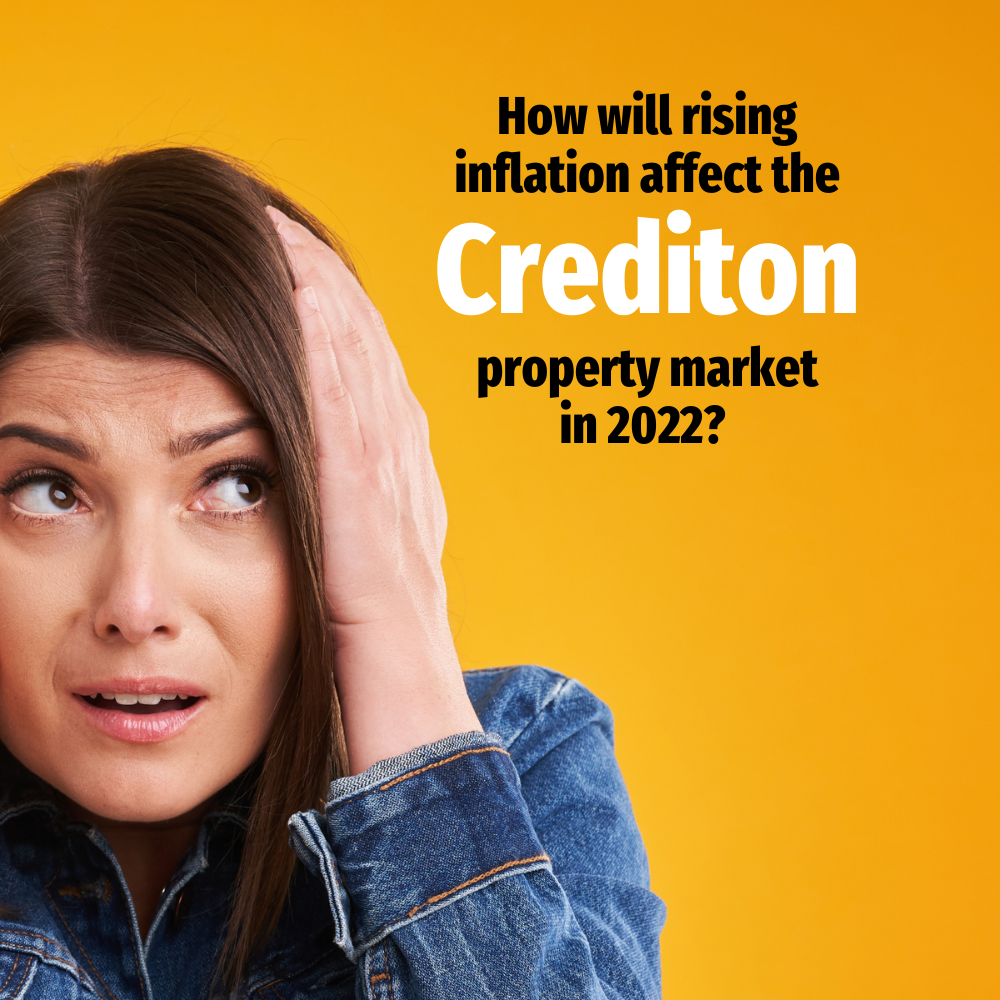The UK is currently experiencing its highest inflation rate since the early 1990s. This increase in ...
The UK is currently experiencing its highest inflation rate since the early 1990s. This increase in prices has primarily come about by the combination of an increase in demand for goods and services from consumers following lockdown last year together with global supply chain disruptions.
Most economists weren’t too concerned about this increase in the inflation rate as the very same thing happened in the early 1990s following the Credit Crunch with a similar rise in demand and supply chain issues. Thankfully, back in the early 1990s, inflation returned to lower levels quite quickly. However, the situation in Eastern Europe now could change matters.
So, let me look at all the factors and what it means for the Crediton property market.
The crisis in Eastern Europe has sparked even further rises in crude oil (which diesel and petrol are made from), gas and grain prices as pressure on supply chains around the world increases.
In my previous articles, I suggested UK inflation would rise to around 7% in the spring and drop back to 5% in the autumn and as we entered 2023, be approximately 3% to 4%.
Yet, with these issues, inflation could rise to 8% to 9% by late spring and still be around 6% to 7% in autumn, well above the Bank of England’s target of 2%.
With Crediton wages rising at only 3% to 4% and inflation at 7%+, Crediton household incomes, in real terms, will fall.
This is because ‘real’ UK household incomes characteristically have been the most consistent lead indicator of growth (or a drop) in house prices. This is because growing inflation erodes the value of money you earn, which reduces its buying power. When the cash in your pocket has a lower spending power, people tend to spend less when they buy (and rent) a home (and vice versa).
Next month, Income Tax thresholds will be frozen, and National Insurance contributions are increasing. Collectively, all these issues will create a drop of around 2% to 2.5% in the real disposable income of Britain’s households in 2022 (real disposable income – somebody’s take-home wages after tax and then the effects of inflation are considered).
Will Crediton people be more anxious to spend their money?
With less money in people’s pockets, people’s inclination to spend the money they do have could also be curtailed. People’s savings are at an all-time high, yet many will decide to sit on the cash, instead of spending it, especially as consumer confidence has dropped to minus 26 on the GfK index (whatever that means – but in all seriousness though – more on that below).
All this can only mean there is going to be a house price crash.
It’s all doom and gloom! …Or is it?
My heart goes out to people caught up in the awful humanitarian crisis in Eastern Europe. Yet, I respectfully need to put that to one side for just a moment for the purpose of this article.
This blog is about the Crediton property market, and Crediton people want to know what will happen to the Crediton property market.
In the first half of the article, I looked at the impending fall in real disposable incomes of 2% to 2.5% in 2022. I appreciate it’s going to be tough for many families in Crediton. Yet, it is always important to consider what has happened in previous times.
1982 – a drop of 2.3% in real disposable income
1992 – a drop of 3.7% in real disposable income
2008 – a drop of 5.8% in real disposable income
Yes, it’s going to be tough, yet we got through 1982, 1992 and 2008 – and so we shall in 2022/23.
Next, the price of petrol is very high compared to a year ago.
The average price of unleaded petrol is £1.51/litre today, quite a jump from the £1.21/litre a year ago. But here is an interesting fact, petrol was a lot more expensive (in real terms) in 2011 than today. In TODAY’s money, a litre of unleaded petrol in 2011 would be the equivalent of £1.79/litre. We have some way to go before we get to those levels – and again, the Crediton economy (and property market) kicked on quite nicely after 2011.
What are Crediton people spending on their rent and mortgages?
Housing costs – owner occupiers were spending on average 17.3% of their household income on mortgages in 2015, yet in 2021 this had risen, albeit to 17.7% – not a huge increase.
Council house (social) tenants have seen a drop in their rent from 29.2% in 2015 to 26.7% in 2021, whilst private tenants from 36.4% in 2015 to 31.2% in 2021.



 posted by
posted by 
 posted by
posted by 
 posted by
posted by 
Share this with
Email
Facebook
Messenger
Twitter
Pinterest
LinkedIn
Copy this link